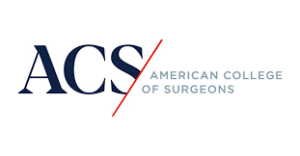Surgeons rethink aggressive care as xylazine wounds mimic necrotizing fasciitis but rarely require urgent radical excision
Editor's Note
Surgeons across multiple disciplines are confronting a distinct wound pattern tied to xylazine-contaminated opioids and adapting management to avoid unnecessary amputations, the American College of Surgeons October 1 reports. These wounds can resemble necrotizing soft tissue infection at first glance, yet the clinical picture and trajectory differ, calling for measured debridement, harm-reduction strategies, withdrawal management, and patience rather than immediate OR trips for radical excision.
As detailed in the article, clinicians in cities heavily affected by the opioid crisis are seeing severe, necrotic wounds at injection sites and at distant locations. Proposed mechanisms include local tissue toxicity and vasoconstriction, with presentations ranging from early superficial injury to mummified limbs and exposed, crumbling bone from osteomyelitis. Despite alarming appearances, patients typically show pain proportionate to injury, low-grade or no fever, stable vitals, and unremarkable labs and CT findings. This contrasts with necrotizing fasciitis, which presents with extreme pain, systemic toxicity, soft-tissue gas, and high mortality if untreated.
The outlet reports treatment emphasizes nonaggressive debridement, dermal substitutes, close monitoring, and alignment with addiction medicine. Skin grafting is discouraged while injection continues because grafts can fail and donor sites create new vulnerabilities; many patients heal over dermal substitutes once dead tissue is removed. Osteomyelitis care is often delayed until soft-tissue coverage improves.
Patient-centered care is central. The article notes high rates of patients leaving against medical advice without adequate withdrawal management. Recommended inpatient approaches include treating withdrawal symptoms and coordinating pain control with methadone, buprenorphine, and other agents as needed so patients can remain hospitalized to receive wound care.
Consensus efforts are emerging. The outlet reports a 2024 symposium in Philadelphia produced a consensus statement with a classification system, an amputation algorithm, and guidance on wound care, pain management, social services, and ethics. In 2025, UPMC instituted systemwide standards for xylazine wound care, and additional protocols are in development. Encouragingly, the Philadelphia Department of Public Health observed a decline in xylazine contamination of tested fentanyl from nearly universal in May 2024 to 42% by December 2024, while other additives have not shown comparable tissue injury.
Read More >>

 Free Daily News
Free Daily News